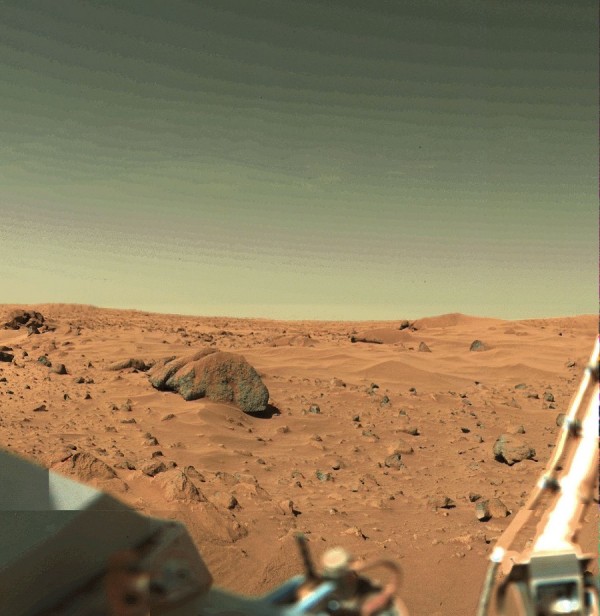By Ana Verayo, | October 24, 2016

This image was acquired at the Viking Lander 1 site with camera number 1.
A new study claims that life on Mars was first detected by the Viking missions of NASA in the 1970s courtesy of the Viking 1 and Viking 2 landers, which were the first man-made spacecraft that visited the Red Planet.
Like Us on Facebook
The scientists behind this new study re-examined data obtained by Viking missions some 40 years ago, and now suggest that the Viking experiments may have gathered biological evidence of life on Mars.
This data included evidence of water and organic molecules, including methane on the Red Planet, according to Gilbert V. Levin of the Arizona State University and Patricia Ann Straat from the United States National Institutes of Health.
The researchers discovered traces of chemical signals known as radioactive 14CO2 isotopes in Martian soil collected from the 1976 Viking missions. The landers were more than 4,000 miles apart from each other, collecting soil samples from different sites on Mars.
This absence of a non-biological agent satisfies all Viking findings and corroborates environmental evidence that Mars may well be able to support extant life.
Recent studies have confirmed that Mars once had a massive lake system. Since life on Mars disappeared around three billion years ago, it is highly unlikely that the Viking landings in 1976 detected life on the dusty alien world.
However, scientists say that life may still exist on Mars, even if this is in a cryptobiotic state that can be resuscitated when water becomes available.
This new study was published in the journal Astrobiology.
-
Use of Coronavirus Pandemic Drones Raises Privacy Concerns: Drones Spread Fear, Local Officials Say

-
Coronavirus Hampers The Delivery Of Lockheed Martin F-35 Stealth Fighters For 2020

-
Instagram Speeds Up Plans to Add Account Memorialization Feature Due to COVID-19 Deaths

-
NASA: Perseverance Plans to Bring 'Mars Rock' to Earth in 2031

-
600 Dead And 3,000 In The Hospital as Iranians Believed Drinking High-Concentrations of Alcohol Can Cure The Coronavirus

-
600 Dead And 3,000 In The Hospital as Iranians Believed Drinking High-Concentrations of Alcohol Can Cure The Coronavirus

-
COVID-19: Doctors, Nurses Use Virtual Reality to Learn New Skills in Treating Coronavirus Patients







